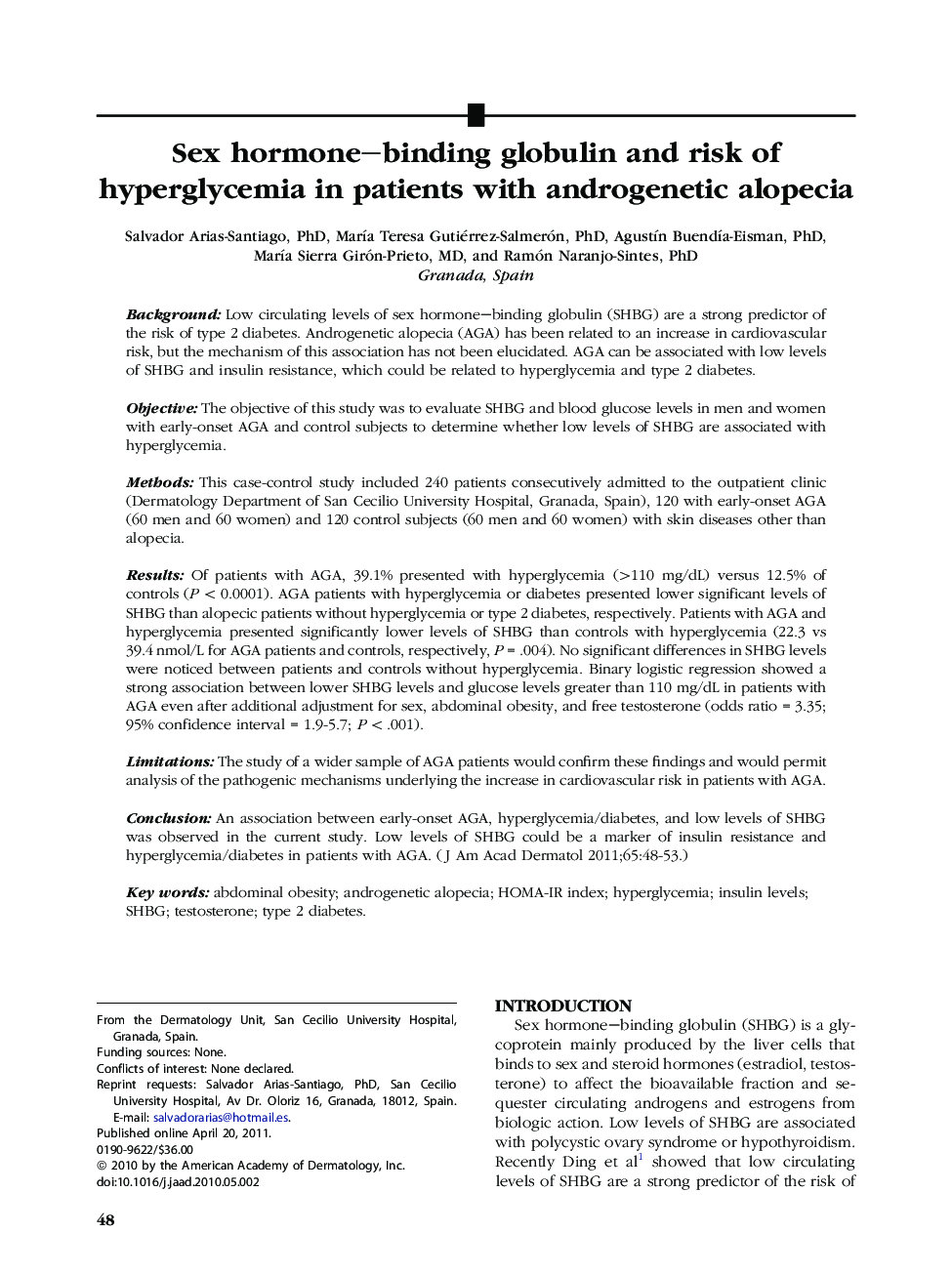| کد مقاله | کد نشریه | سال انتشار | مقاله انگلیسی | نسخه تمام متن |
|---|---|---|---|---|
| 3206754 | 1587577 | 2011 | 6 صفحه PDF | دانلود رایگان |

BackgroundLow circulating levels of sex hormone–binding globulin (SHBG) are a strong predictor of the risk of type 2 diabetes. Androgenetic alopecia (AGA) has been related to an increase in cardiovascular risk, but the mechanism of this association has not been elucidated. AGA can be associated with low levels of SHBG and insulin resistance, which could be related to hyperglycemia and type 2 diabetes.ObjectiveThe objective of this study was to evaluate SHBG and blood glucose levels in men and women with early-onset AGA and control subjects to determine whether low levels of SHBG are associated with hyperglycemia.MethodsThis case-control study included 240 patients consecutively admitted to the outpatient clinic (Dermatology Department of San Cecilio University Hospital, Granada, Spain), 120 with early-onset AGA (60 men and 60 women) and 120 control subjects (60 men and 60 women) with skin diseases other than alopecia.ResultsOf patients with AGA, 39.1% presented with hyperglycemia (>110 mg/dL) versus 12.5% of controls (P < 0.0001). AGA patients with hyperglycemia or diabetes presented lower significant levels of SHBG than alopecic patients without hyperglycemia or type 2 diabetes, respectively. Patients with AGA and hyperglycemia presented significantly lower levels of SHBG than controls with hyperglycemia (22.3 vs 39.4 nmol/L for AGA patients and controls, respectively, P = .004). No significant differences in SHBG levels were noticed between patients and controls without hyperglycemia. Binary logistic regression showed a strong association between lower SHBG levels and glucose levels greater than 110 mg/dL in patients with AGA even after additional adjustment for sex, abdominal obesity, and free testosterone (odds ratio = 3.35; 95% confidence interval = 1.9-5.7; P < .001).LimitationsThe study of a wider sample of AGA patients would confirm these findings and would permit analysis of the pathogenic mechanisms underlying the increase in cardiovascular risk in patients with AGA.ConclusionAn association between early-onset AGA, hyperglycemia/diabetes, and low levels of SHBG was observed in the current study. Low levels of SHBG could be a marker of insulin resistance and hyperglycemia/diabetes in patients with AGA.
Journal: Journal of the American Academy of Dermatology - Volume 65, Issue 1, July 2011, Pages 48–53